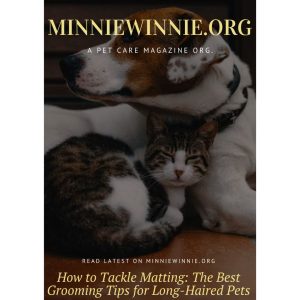How Often Should You Groom Your Pet? Here’s What You Need to Know
Grooming is an essential aspect of pet care, contributing not only to the cleanliness and appearance of your furry friend but also to their overall health and well-being. However, the frequency of grooming can vary significantly depending on factors such as the type of pet, their breed, coat type, and lifestyle. Understanding the grooming needs of your pet is crucial to keeping them healthy, comfortable, and looking their best. Here’s a comprehensive guide to help you determine how often you should groom your pet.
1. Understanding the Basics of Pet Grooming
Pet grooming involves a range of activities, including brushing, bathing, trimming nails, cleaning ears, and, in some cases, haircuts. Each of these activities plays a role in maintaining your pet’s hygiene and health:
- Brushing helps remove loose fur, dirt, and debris while preventing mats and tangles, especially in long-haired breeds.
- Bathing cleans the skin and coat, removing excess oils, dirt, and odor.
- Nail trimming prevents overgrown nails that can cause discomfort or injury.
- Ear cleaning reduces the risk of ear infections by removing wax buildup and debris.
- Haircuts may be necessary for certain breeds to maintain a manageable coat length.
2. Grooming Frequency Based on Pet Type
The type of pet you have is the primary determinant of how often grooming is needed.
Dogs
Dogs’ grooming needs vary widely based on their breed, coat type, and lifestyle:
- Short-haired breeds like Beagles, Boxers, and Labrador Retrievers generally require less frequent grooming. Brushing once a week and bathing every 6-8 weeks is often sufficient.
- Long-haired breeds such as Shih Tzus, Afghan Hounds, and Golden Retrievers need more frequent grooming. Daily brushing is recommended to prevent tangles and mats, with baths every 4-6 weeks. Professional grooming every 6-8 weeks may also be necessary.
- Curly or wavy-coated breeds like Poodles and Bichon Frises have coats that can mat easily, so daily brushing is crucial. These breeds also require regular haircuts, typically every 4-6 weeks, to keep their coats in good condition.
- Double-coated breeds such as Huskies, German Shepherds, and Pomeranians shed seasonally and benefit from weekly brushing year-round and more frequent brushing during shedding seasons (spring and fall). Bathing can be done every 8-12 weeks unless they get particularly dirty.
Cats
Cats are generally good at grooming themselves, but they still need some help from their owners:
- Short-haired cats typically require minimal grooming, with brushing once a week to remove loose fur and reduce shedding.
- Long-haired cats like Persians and Maine Coons need more attention. Daily brushing is ideal to prevent mats and tangles, with baths every few months if they tolerate it.
- Hairless breeds like the Sphynx have unique grooming needs. Despite having no fur, their skin can become oily and dirty. Weekly baths and regular ear cleaning are recommended.
Small Pets
Small animals such as rabbits, guinea pigs, and ferrets also require regular grooming:
- Rabbits need regular brushing, especially during shedding seasons, to prevent hairballs. Long-haired breeds like Angoras may need daily grooming.
- Guinea pigs benefit from weekly brushing, with long-haired varieties requiring more frequent care.
- Ferrets have oily skin and benefit from baths every few months, along with regular ear cleaning and nail trimming.
3. Signs Your Pet Needs Grooming
Even with a grooming schedule, it’s important to watch for signs that your pet needs extra attention:
- Matted or tangled fur is a clear indication that your pet needs brushing.
- Bad odor may suggest it’s time for a bath or ear cleaning.
- Overgrown nails can cause discomfort, making it difficult for your pet to walk.
- Excessive scratching or licking can indicate skin irritation or parasites, which might require a bath or vet visit.
4. Tips for Successful Grooming
Grooming can be a bonding experience if done correctly. Here are some tips to make the process easier:
- Start young: Introduce grooming to your pet early in life to get them accustomed to the routine.
- Use the right tools: Invest in grooming tools suited to your pet’s coat type, such as slicker brushes for long-haired breeds or grooming mitts for short-haired pets.
- Be gentle and patient: Grooming should be a positive experience, so take your time and reward your pet with treats or praise.
- Seek professional help when needed: For complicated grooming tasks or if your pet is particularly anxious, consider hiring a professional groomer.
5. When to Consult a Veterinarian
Sometimes, grooming reveals underlying health issues. If you notice any unusual lumps, skin irritations, or persistent odors, it’s essential to consult your veterinarian. These could be signs of allergies, infections, or other health concerns that require medical attention.
Conclusion
Regular grooming is an essential part of pet care that goes beyond aesthetics. It helps maintain your pet’s health, comfort, and happiness. By understanding your pet’s specific grooming needs and staying consistent with their grooming routine, you can ensure they lead a healthy and happy life. Remember, grooming is not just about keeping your pet looking good; it’s about ensuring they feel good too.










